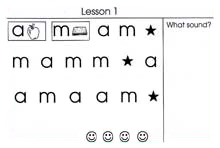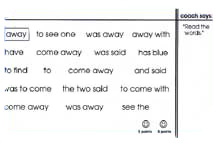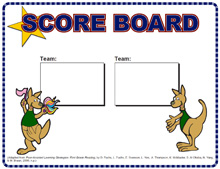How can the teachers at Washington Elementary implement these activities?
Page 9: Motivate Students and Maintain Interest
 The primary-grade teachers at Washington Elementary know that the majority of their kindergarten and first-grade students are beginning readers. They realize that they will need to motivate these young students to correctly implement PALS and will have to work to maintain their interest, especially as the year progresses. They also recognize that the students will benefit from frequent encouragement. As they read through the PALS manuals, they notice that the motivational component varies for each grade level.
The primary-grade teachers at Washington Elementary know that the majority of their kindergarten and first-grade students are beginning readers. They realize that they will need to motivate these young students to correctly implement PALS and will have to work to maintain their interest, especially as the year progresses. They also recognize that the students will benefit from frequent encouragement. As they read through the PALS manuals, they notice that the motivational component varies for each grade level.
Kindergarten
In K-PALS, the lesson sheets contain two types of built-in motivators and prompts. First, the What Sound? section of the lesson sheet contains stars. When the Reader encounters a star, he or she pauses, and the Coach offers praise. Second, each section of the lesson sheet contains four happy faces. The student pair completes each section four times, twice per student, and each time a Reader completes a section of a lesson, the Coach circles one happy face (i.e., one point).
Lesson 1
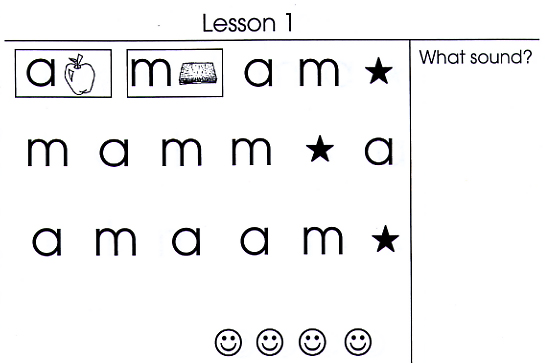
The teacher also gives each student pair a point sheet. As the teacher monitors the students performing the PALS activities, he or she can also mark bonus points on the students’ point sheet for:
- On-task behavior
- Cooperation
- Correct use of K-PALS procedures
First-Grade
As with the K-PALS sheets, the first-grade PALS lesson sheets contain stars to prompt the Coach to praise the Reader. Also, each time a Reader completes a section of a lesson, the Coach colors or circles one happy face, along with five points (see the lesson sheet on the right).
Unlike students participating in K-PALS, first-grade PALS students have additional opportunities to earn points both as pairs and individually. In the Partner Reading activity, the Coach marks five points for the pair after the Reader has completed reading a book. During the Speed Game, individual students read as many words as possible in the first trial and then are given two opportunities to beat that score.
K-PALS Coach
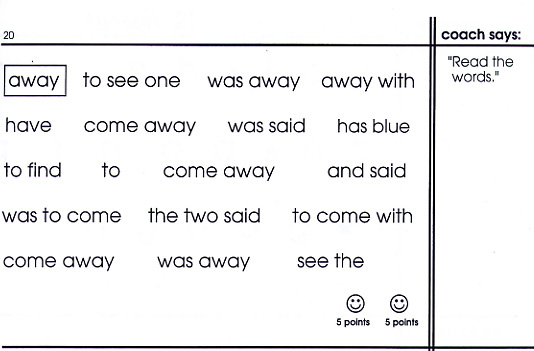
If a student succeeds in doing so, he or she colors in a star on the Star Sheet. When the student has earned six stars, the sheet can be exchanged for a small prize (e.g., pencil, bookmark).
The first-grade teachers at Washington Elementary are also excited to learn that first-grade PALS incorporates a friendly classroom competition in which pairs are assigned to one of two teams and earn points through participation. As they prepare for this competitive component of PALS, there are several things the teachers should be sure to consider.
Awarding Bonus Points to Peer Pairs
Scoreboard
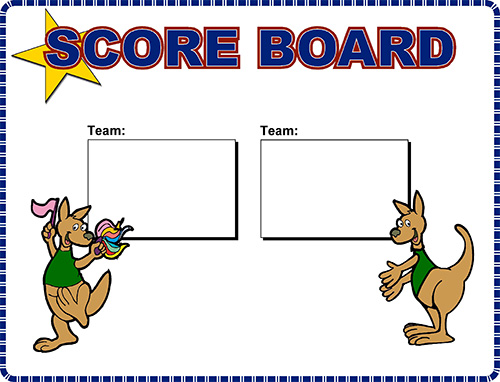
In addition to giving points for the completion of each section of the lesson sheet, teachers can award bonus points for the correct completion of the Sounds and Words and Partner Reading activities. Additional bonus points can be granted to those students who work well with their partners.
Teachers can also allot bonus points to those students who follow PALS rules, appropriately use correction procedures, remain on task, and cooperate. When they do so, teachers should be sure to let the students know why they are receiving the points. Teachers might choose to announce who has earned bonus points during transition times, thus signaling to other students that they may need to work on certain aspects of their reading or social behavior. At the end of each week, the student pairs report their points. The teacher tallies each team’s points and announces the first- and second-place teams. The second-place team is treated to a round of applause, and the first-place team is more roundly cheered.
Assigning Students to Teams
 Teachers should form new teams approximately every four weeks to coincide with the assignment of students to new pairs. To the extent possible, teachers should make certain that their teams are matched in ability. If there is an uneven number of pairs on the teams, the teacher can:
Teachers should form new teams approximately every four weeks to coincide with the assignment of students to new pairs. To the extent possible, teachers should make certain that their teams are matched in ability. If there is an uneven number of pairs on the teams, the teacher can:
- Assign the extra pair to one team and average each team’s scores (i.e., the total number of points earned, divided by the number of pairs)
- Add one pair’s points to both teams’ scores
Kindergarten teachers do not typically incorporate a team approach with K-PALS; however, doing so is certainly possible. Listen as Stephanie Johnson describes how she uses a team approach to motivate her kindergarten students (time: 0:20).

Stephanie Johnson
Kindergarten teacher, Westwood Elementary School
Bloomington, Minnesota
Transcript: Stephanie Johnson
In our classroom, we have a K-PALS “superstar wall” for the team who gets their hundred points first. That’s really what makes them the happiest. I take their picture after they’ve done that, and I put it up on the bulletin board. And that’s just a piece that they’re working towards, as a team, that really motivates them.
